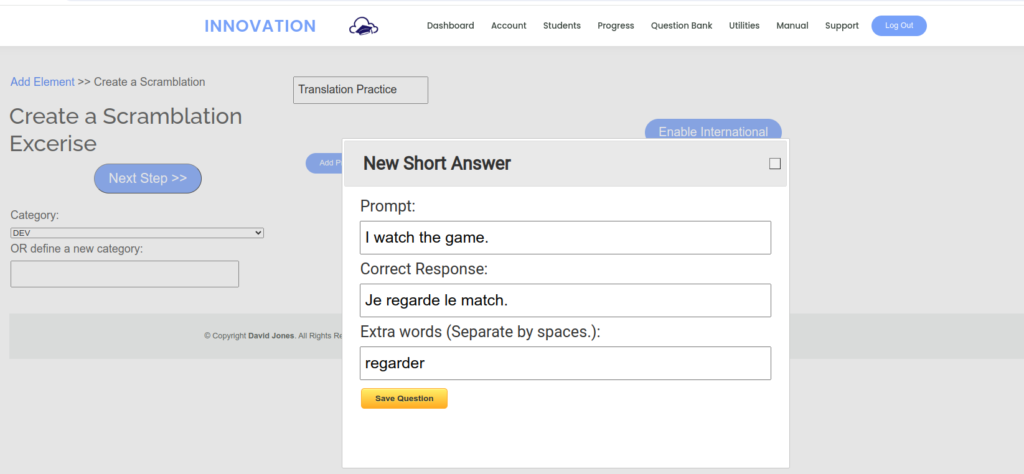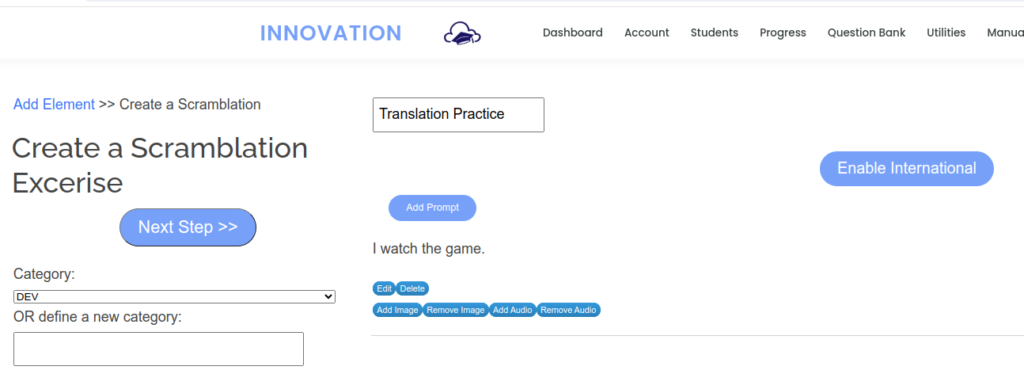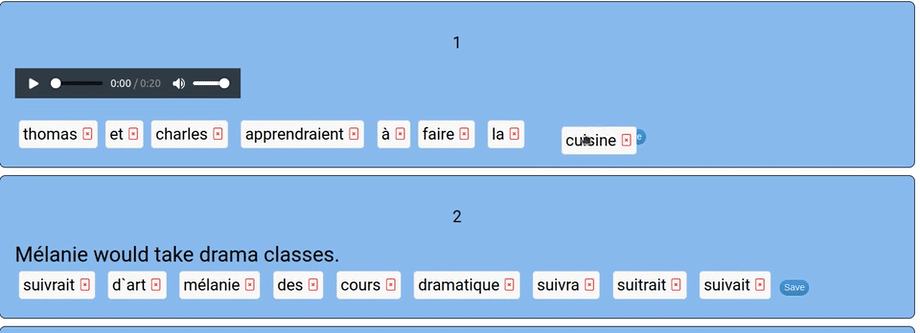Translation as a Strategy
Using translation with beginner language students is fraught with controversy. When I was in elementary school, the contemporary teaching methods for modern languages were phasing out from “grammar-translation” toward more communicative approaches. Translation came to be seen as antiquated, impractical, unnatural.
It cannot be denied that some criticism of translation, especially for beginners, is valid. I cannot help reflect on some brilliant students I have had over the years who, by French III, had become held back by their insistence on mentally translating everything before they wrote or spoke. Their focus on the rules, the words, the syntax, the burden of feeling like they must not err, all conspired to leave them tongue-tied and frozen whenever they were called upon to improvise speech or writing.
Nonetheless, I find in my experience that there is a place for translation in novice language lessons. Students should learn the ways that the target language differs from their own so that they gradually learn to avoid applying the syntactical patterns of their own language. The also need to be able to discern morphological differences in the target language that may be slight to their eyes but which meaning can vary significantly. Finally, it is a good way for novices to learn the longer, whole functional phrases that are a part of the earliest stages of learning before grammar has been taught to let them synthesize their own utterances.
Barriers to Using Translation to Teach Novices
Limited vocabulary is the first barrier to using translation to teach novices. In the textbooks at the start of the 20th century, each chapter had a very controlled vocabulary that was repeated in reading and translation exercises. Many of us no longer teach that way. I teach through theme units. The unit has a lot of vocabulary but the higher order language work is not limited to that as a controlled vocabulary list. Narratives and authentic texts, even listening practices, while selected with difficulty in mind, do in fact include words and structures the student may not yet have been taught. The advantages of this approach are well known and it is common practice now. Among other things, the student learns the very functional skill of deriving meaning from context, selectively ignoring incomprehensible utterances in favor of the meaningful, and perhaps learning new words from context.
The second barrier to teaching with translation is, naturally, grammar. Good grammar exercises that use translation have to be very controlled to account for irregulars and inconsistencies that most language boast of. At the very early stages, novices has so little grammar under their belt that translation may not prove worthwhile. Or, the cognitive load of balancing all the rules will render the exercise useless for its purpose.
Here is What I Needed
I needed an app that would auto-correct and let students try again when they made errors. I needed limited vocabulary and limited grammatical competence to be largely irrelevant. I needed an interactive activity where students manage the syntax and recognize correct forms. I call the new app “scramblation”. It is a drag-and-drop interface where students assemble an utterance in the target language from a prompt that is either in text form or audio clip.
Translation plays a pivotal role in the process of studying a foreign language, serving as a valuable tool for language learners to bridge the gap between their native tongue and the target language. It offers learners a nuanced understanding of linguistic structures, idiomatic expressions, and cultural nuances, thereby facilitating a more profound comprehension of the language’s intricacies. Translating texts from the target language to one’s native language and vice versa enhances vocabulary acquisition, grammar proficiency, and overall language competence. It enables learners to decipher the meaning behind words and phrases, fostering a deeper connection to the cultural context embedded within the language. Moreover, translation exercises encourage critical thinking and analytical skills, as learners must carefully consider the nuances of each word and construct coherent and contextually accurate sentences.
A New App
Instructors can generate a new scramblation from the playlist of their course in Innovation. They enter a prompt, the correct answer, and some extra words. I link to use the extra words to enter un-conjugated verbs or words an English speaker might put in that would not go in the target language.

The prompt can be an audio clip (in which case the text prompt is hidden) and can include an image.

Students can see the task in their playlist and access to a scramblation can be made possible from a link in the lesson plan app or an external link that instructors can send to students.
The app itself is simple: first, students should remove any extra words by clicking the small red “x” in the word’s box. Next, the student drags and drops the words into the right order. They save their answer, check it, and the algorithmic AI will tell them how close they are.

Like all of the apps at Innovation, the scramblation has a proctor activated that tracks student activity on the page, including when they leave the page and how long they were working.
The importance of interactive web applications in the realm of remote teaching cannot be overstated. Interactive web applications emerge as powerful catalysts for student engagement, collaboration, and personalized learning experiences. The ability to seamlessly integrate multimedia content, real-time communication, and interactive assessments not only enhances the effectiveness of teaching but also empowers educators to adapt their pedagogical approaches to the diverse needs of their students.
